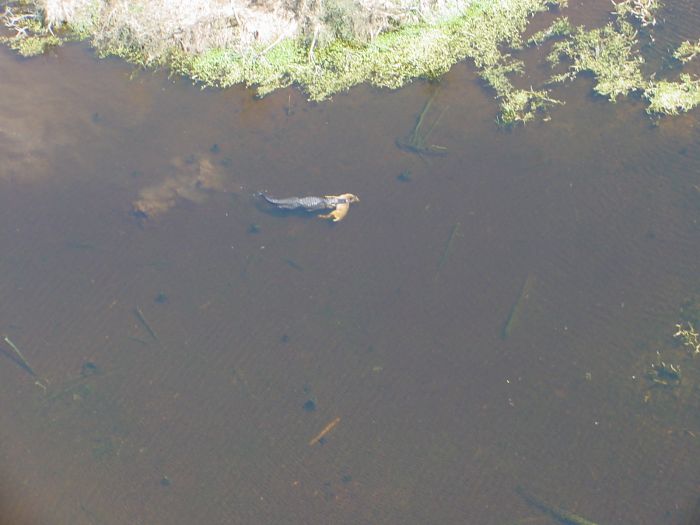|
|
Alligator With A Deer In His Jaws, Georgia, United States
|
Crocodiles are very fast over short distances, even out of water. Since crocodiles feed by grabbing and holding onto their prey, they have evolved sharp teeth for tearing and holding onto flesh, and powerful muscles that close the jaws and hold them shut. These jaws can bite down with immense force, by far the strongest bite of any animal. The pressure of the crocodile's bite is more than 5,000 pounds per square inch (30,000 kPa), compared to just 335 pounds per square inch (2,300 kPa) for a rottweiler, 400 pounds per square inch (2,800 kPa) for a large great white shark, 800 pounds per square inch (6,000 kPa) to 1,000 pounds per square inch (7,000 kPa) for a hyena, or 2,000 pounds per square inch (10,000 kPa) for a large alligator. The jaws are opened, however, by a very weak set of muscles. Crocodiles can thus be subdued for study or transport by taping their jaws or holding their jaws shut with large rubber bands cut from automobile inner tubes. They have limited lateral (side-to-side) movement in their neck.
Crocodiles are ambush hunters, waiting for fish or land animals to come close, then rushing out to attack. As cold-blooded predators, they have a very slow metabolism, and thus can survive long periods without food. Despite their appearance of being slow, crocodiles are top predators in their environment, and various species have been observed attacking and killing sharks. A famous exception is the Egyptian Plover which is said to enjoy a symbiotic relationship with the crocodile. According to unauthenticated reports, the plover feeds on parasites that infest the crocodile's mouth and the crocodile will open its jaws and let the bird enter to clean parasites and bits out of the mouth.
Many large crocodilians swallow stones (called gastroliths or stomach stones) which may act as ballast to balance their body or assist in crushing food, similar to grit in birds.
|
|









